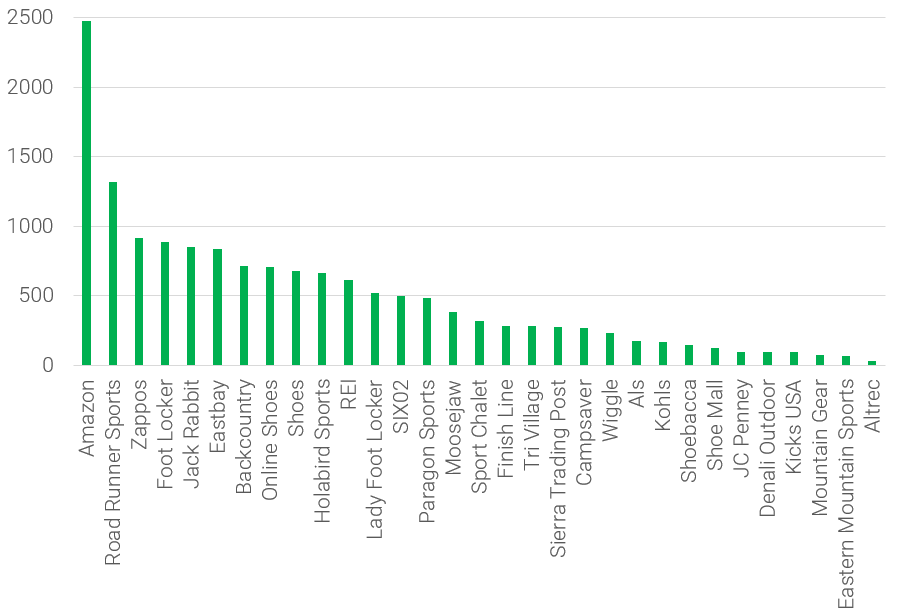Every time one of these questions lands in my inbox, a runner trips in a pothole and loses a season from injury:
“What are the best shoes to help heal my plantar fasciitis?”
“I pronate slightly more than normal – can you recommend a good running shoe?”
“Do ASICS work well for middle-aged women in Nebraska who run 17.5 miles per week in corn fields?”
I had some fun with that last one… but the first two are real questions I get! I simply can’t answer these questions. I have no idea – and no coach does.
The decision of what shoes to wear is intensely personal – and when I write running shoe reviews, I always mention that the shoe “might work for you if ‘xyz’ is true.”
Every runner is an individual with unique needs. Just think about everything that differs from runner to runner:
- Stride length
- Foot strike
- Weight
- Use profile (volume, intensity, frequency)
- Injury history
- Biomechanical flaws
What works for me may be a terrible choice for you.
The best way to find what works for you is to test as many shoes as you can. You may find that a certain type works best on easy runs while you tolerate a very different style for faster workouts.
Ultimately, shoe selection is an experiment that requires lots of trials.
And you should always be rotating 2-3 different models of shoe to slightly vary the stress your feet and lower legs experience to prevent injuries. It’s science.
Not only will this help you prevent injuries, but it’s more fun (God, I love shoes) and will help you learn what shoes work for you.
Because shoe selection is an experimental process and it’s valuable to have several pairs in rotation, it’s helpful to save as much cash as possible when you’re buying shoes.
After all, shoes won’t make you a better runner. Hard work, consistency, ongoing education, support, and coaching will certainly help you run faster.
But not shoes…
Study: 183,911 running shoe prices analyzed
The folks at RunRepeat have pored over the prices of hundreds of thousands of shoes to tease out exactly how to save money on running shoes.
A total of 2,436 unique running shoes were included across 36 running shoe brands from 41 US retailers. This covers more than 99.99% of the total running shoe market.
Check out this infographic:

It’s always best to make decisions based on research – and it’s clear that there are some big lessons to draw from this research.
What can we learn from this running shoe study?
To me, there’s a basic lesson to be learned from this enormous body of research:
Buy your shoes online and do some research before pressing the Buy Now button.
There are also some smaller lessons that can be helpful for saving money:
- Buy neutral or stability shoes instead of motion control shoes (As we learned from Pete Larson’s Tread Lightly, motion control shoes actually cause injuries too)
- Less supportive shoes also cost less. Save $5.60 per ounce!
- Amazon has the best prices (see here) and with a Prime membership, you get free shipping too
- Amazon also has the best selection of any online retailer
- Opt for last year’s model and save another 19%
It seems that if you buy last year’s neutral or stability shoe model on Amazon, you’ll get the best deal.
And the best selection by far:

In all my shoe reviews, I always send folks to Amazon because I had a hunch this was true.
But it’s not all about price…
Even though we now know the most cost-effective way to buy shoes, is that the best way to do it?
I don’t think so.
You may buy shoes for other reasons – say, to support your local specialty running store – and that’s fantastic but a topic for another day.
If you’re a new runner or a runner with a long injury history, it’s best to try your shoes on before you purchase them.
While this is impossible when buying shoes online, a specialty running retailer will allow you to run on a treadmill or around the block in shoes to gauge how they feel.
Because ultimately, that’s what matters: how they feel. Fit and comfort are the most important considerations when buying running shoes.
Here is a quote from Runnah that sums up how I think about running shoe selection:
BE COMFORTABLE – this is the most important thing, find a shoe that you run comfortably in – one that you put on and forget about. Get beyond brand marketing, the salesperson’s prejudices or preconceptions, the running store’s limited selection and find the pair of running shoes that feel comfortable to you when you are running.
No, this is not easy, yes you will try many running shoes and spend lots of money, before you find the style of running shoes that allow you to run comfortably.
I couldn’t have said this better myself.
So when you read any shoe review, keep in mind that it is most definitely biased. Be critical and take any recommendation with a large grain of salt.
If it’s one of my reviews, keep in mind I’m a whopping 127 pounds and fairly efficient. I can run in minimalist shoes and cushioned shoes without too many problems.
Bottom line: test, experiment, and try as many different models of shoe as you can.
You’ll learn a lot about shoes – and most importantly, yourself.